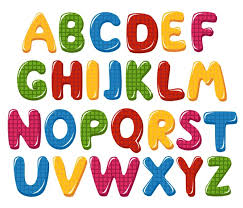
The ABCs and More: Exploring the Alphabet A to Z
ABCs alphabet is something we all know well, but have you ever stopped to wonder about its full meaning? Whether you’re just learning to read or an expert in spelling, the alphabet is essential to communication. Let’s dive into some fun and interesting facts about the English alphabet and its many variations.
What is the Alphabet A to Z?
When we talk about the alphabet A to Z, we’re referring to the 26 letters that make up the English language. These are: A, B, C, D, E, F, G, H, I, J, K, L, M, N, O, P, Q, R, S, T, U, V, W, X, Y, Z. Together, these letters form the words, sentences, and stories that make up our everyday communication.
The alphabet is the building block of reading and writing, and it’s essential for everything from texting your friends to writing a book. It’s made up of uppercase letters (A, B, C, etc.) and lowercase letters (a, b, c, etc.), and each one has its own distinct sound, which is why they are the foundation of language.

What is the 23rd English Alphabet?
The 23rd letter of the alphabet is W. It comes after V (the 22nd letter) and before X (the 24th). W is unique in the English language because it’s the only letter that is called “double-U,” and its shape looks like two “U”s put together. ABCs
In speech, W has a distinctive sound, heard in words like “wonder,” “world,” and “water.” It’s one of those letters that we use every day, but it often goes unnoticed until you think about it! ABCs
What is the Alpha Charlie Bravo Alphabet?
The Alpha Charlie Bravo alphabet is another name for the NATO phonetic alphabet. This system was designed to help people communicate clearly over radio or phone, especially when things get noisy or the signal is bad. The idea is to replace each letter with a word that is easy to understand. ABCs
For example: ABCs
- A becomes “Alpha”
- B becomes “Bravo”
- C becomes “Charlie”
Here’s the full list: ABCs
- A – Alpha
- B – Bravo
- C – Charlie
- D – Delta
- E – Echo
- F – Foxtrot
- G – Golf
- H – Hotel
- I – India
- J – Juliett
- K – Kilo
- L – Lima
- M – Mike
- N – November
- O – Oscar
- P – Papa
- Q – Quebec
- R – Romeo
- S – Sierra
- T – Tango
- U – Uniform
- V – Victor
- W – Whiskey
- X – X-ray
- Y – Yankee
- Z – Zulu
This system makes it easier to hear and understand letters in situations where clarity is critical, such as air traffic control or military operations.
What is the 28-Letter Alphabet? ABCs
You might be wondering, “Isn’t there only 26 letters in the alphabet?” While the English alphabet traditionally has 26 letters, the 28-letter alphabet refers to certain variations of the alphabet used in other languages or older systems. For example, the ampersand (&) was once considered a letter in the English alphabet, bringing the total count to 27, and sometimes Ñ is added in languages like Spanish, which brings the total to 28.
It’s also worth noting that languages like Spanish and Portuguese have additional letters, like Ñ (e.g., “jalapeño”), but these aren’t part of the standard English alphabet. In these cases, you could think of the alphabet as extending beyond 26 letters to better fit the needs of those languages.
What is the Alphabetical Order from A to Z?
The alphabetical order is the way we arrange the 26 letters from A to Z. It’s an easy system to follow, and it helps us organize everything from lists to phone books. Here’s the order you’re probably most familiar with:
- A
- B
- C
- D
- E
- F
- G
- H
- I
- J
- K
- L
- M
- N
- O
- P
- Q
- R
- S
- T
- U
- V
- W
- X
- Y
- Z
This order is what we use to sort everything—whether it’s names, titles, or items in a list. It helps to keep things neat and easy to find!
Wrapping Up: The Power of the Alphabet
From A to Z, the alphabet is more than just a collection of letters. It’s the tool that allows us to communicate, learn, and share ideas. Whether we’re using the regular alphabet, the phonetic alphabet, or even a longer version like the 28-letter alphabet, it’s a system that has been evolving for centuries to meet our needs.
Next time you write a word, think about the magic behind those 26 little letters and how they form the foundation of everything we read, speak, and write.
